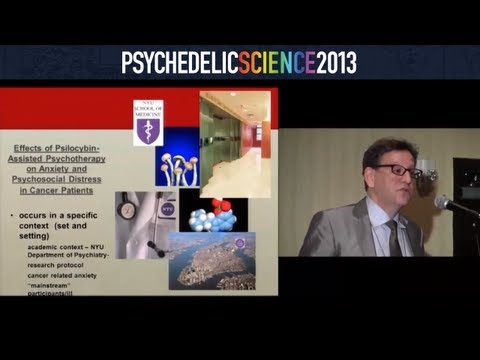
Why "no" to artificial milk? Are there long-term benefits of breastfeeding? What working conditions would improve breastfeeding? These and other questions get answers in the ten facts about breastfeeding WHO exposes to actively promote breastfeeding as the best source of nutrients for infants and young children.
WHO is one of the organizations devoted to health that recommend exclusive breastfeeding for babies during the first six months of life and up to two years or more. Breastfeeding is one of the most effective ways to ensure children's health and survival.
After the first six months, combined with complementary feeding, breastfeeding prevents malnutrition and can save the lives of about one million children. But the data indicate that children under six months fed exclusively with breast milk do not reach 40%.
Can this figure change? According to the WHO, many children would save their lives and prevent diseases by providing adequate support to mothers and families to initiate and maintain breastfeeding.
These are just some of the ten facts about breastfeeding of the WHO that we see next. Here are the many benefits of breastfeeding and how the help to mothers can increase breastfeeding worldwide.
WHO strongly recommends exclusively breastfeeding during the first six months of life. Then it should be supplemented with other foods until two years. In addition, it must begin in the first hour of life; it must be done "on demand", that is, as often as the child wants, both day and night, and bottles and pacifiers should be avoided.
Health benefits of the infant. Breast milk is ideal for newborns and infants, because it provides all the nutrients they need for healthy development. It is also harmless and contains antibodies that help protect the infant from frequent diseases such as diarrhea and pneumonia, which are the two leading causes of infant mortality worldwide. Breast milk is easy to get and affordable, which helps ensure that the infant has enough food.
- Long term benefits for the child In addition to the immediate benefits for the child, breastfeeding helps maintain good health throughout life. Adults who breastfed often have lower blood pressure, lower cholesterol and lower rates of overweight, obesity and type 2 diabetes. There are also data indicating that people who had breastfeeding get better results in the intelligence.

- Why not artificial milk? Artificial milk does not contain the antibodies present in breast milk, and when not properly prepared it carries risks related to the use of unhealthy water and non-sterile material or the possible presence of bacteria in the milk powder. Excessive dilution in order to save may end up causing malnutrition. On the other hand, frequent intakes maintain the production of breast milk and, in case artificial milk is used but is no longer available, it may be impossible to return to breastfeeding due to the decrease in breast production.
- Women infected with HIV can transmit the infection to their children during pregnancy, childbirth or breastfeeding. Antiretroviral treatment of infected mothers or infants exposed to HIV reduces the risk of transmission of the virus during breastfeeding. Together, antiretroviral treatment and breastfeeding can significantly improve the likelihood of infant survival without being infected with HIV. WHO recommends that HIV-infected breastfeeding women receive antiretrovirals and follow the WHO guidelines regarding breastfeeding and complementary feeding.
- Regulation of breast milk substitutes. The Health Assembly approved in 1981 an international code that helps regulate the marketing of breast milk substitutes, but so far its adoption by countries has been scarce. The code stipulates that: labels and other information on all artificial milks make clear the benefits of breastfeeding and the health risks associated with substitutes; there are no activities to promote breast milk substitutes; free samples of the substitutes are not offered to pregnant women, mothers or families, and the substitutes are not distributed free of charge or subsidized among health workers or in health centers.
- Mother support is essential. Breastfeeding requires learning and many women have difficulties at the beginning. Nipple pain and fear that milk is not enough to support the child are frequent. To encourage it, there are health centers that support breastfeeding by making qualified advisors available to mothers. Thanks to an initiative of WHO and UNICEF, there are currently more than 20,000 “child-friendly” centers in 152 countries that provide such support and help improve care for mothers and newborns.
- Breastfeeding and work. Many women who return to work have to stop breastfeeding exclusively due to lack of time or adequate facilities to breastfeed or withdraw and collect milk at work. Mothers need to have a safe, clean and private place in their work or near them so they can continue breastfeeding their children. Some working conditions may facilitate breastfeeding, such as paid maternity leave, part-time work, day care centers in the workplace, breastfeeding or pumping facilities, and breastfeeding breaks.
- The next step: the progressive introduction of new foods. To meet the growing needs of children after six months, new foods should be introduced without interrupting breastfeeding. Food for young children can be prepared especially for them or based on family feeding with some modifications. WHO emphasizes that: breastfeeding should not be reduced when starting to introduce complementary foods; complementary foods should be administered with a spoon or cup, and not with a bottle; Food must be safe and available locally, and it takes a long time for young children to learn to eat solid foods.
As we see there are many ways to improve data on breastfeeding in the world, and above all there are many reasons to try to do so and that society is increasingly aware of its benefits.












